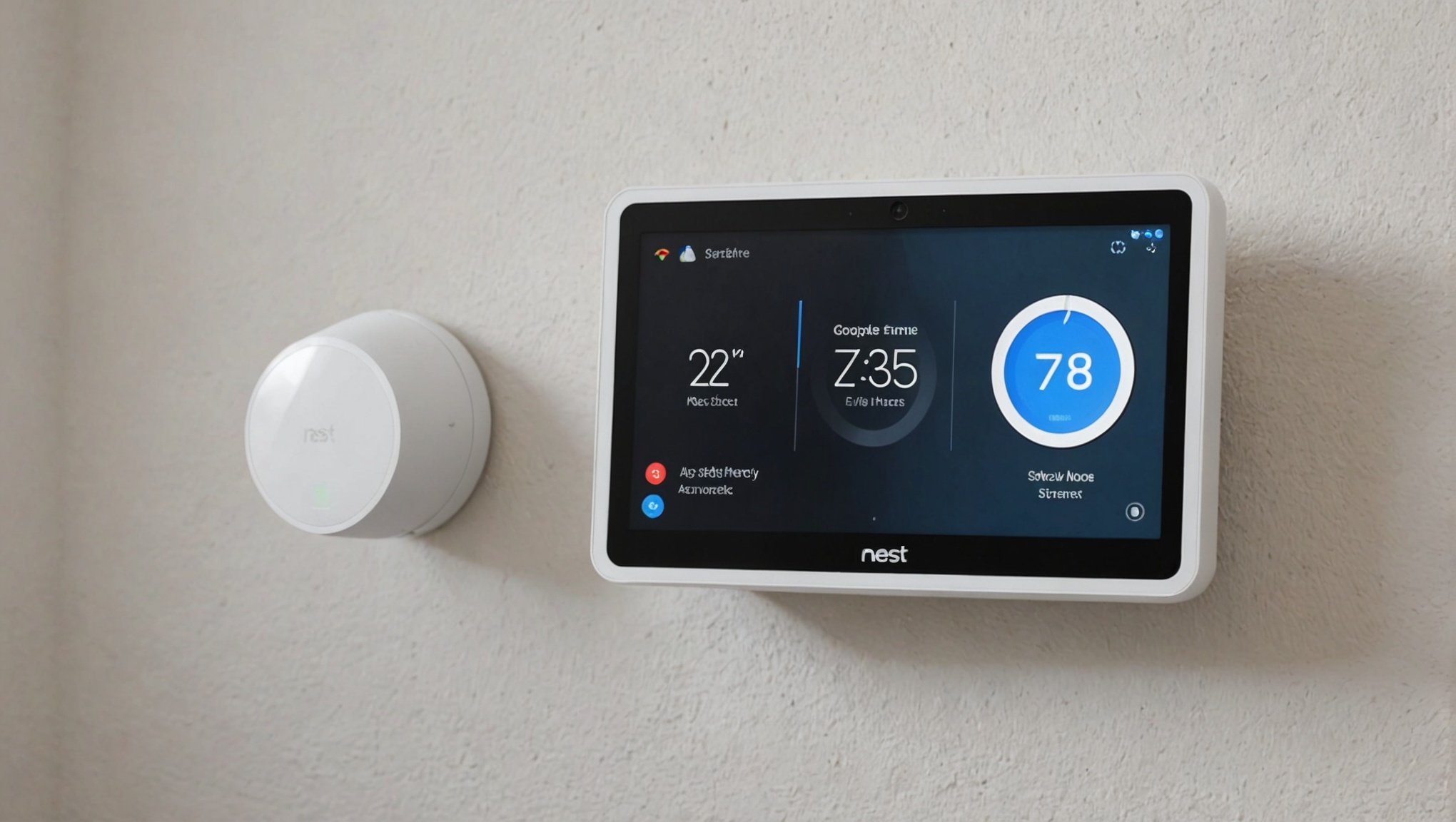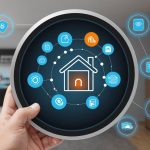In the fast-paced reality of 2024, home automation systems have gained traction, promising efficiency, convenience, and enhanced security. One popular choice among tech enthusiasts and homeowners is the Google Nest Hub. This smart display offers a myriad of functionalities that can transform your living space into a futuristic haven. But setting up a home automation system isn’t merely about plugging in devices; it requires careful consideration to ensure both security and efficiency. This guide explores the best practices for achieving a robust and user-friendly home automation setup using a Google Nest Hub.
Understanding the Basics of Google Nest Hub
The Google Nest Hub serves as the central control panel of your smart home, integrating various devices and providing a seamless user experience. It supports voice commands, touch interactions, and offers a user-friendly interface, making it a compelling choice for home automation enthusiasts. However, before embarking on this journey, it’s essential to understand the basics of this device.
Have you seen this : Essential Tips for Building a Secure Home Office Network with the Linksys MX5 Velop AX WiFi 6 System
The Nest Hub is built with a focus on interconnectivity. It enables you to link multiple smart devices such as lights, thermostats, cameras, and more from different manufacturers. This interconnectivity ensures that your home operates in a cohesive manner, but it also necessitates a clear understanding of how to integrate these devices effectively.
Ensuring your Google Nest Hub is updated with the latest software is a critical first step. Regular updates not only introduce new features but also fix security vulnerabilities, making your system more robust. To check for updates, navigate to the device settings on your Nest Hub and follow the prompts for software updates.
Have you seen this : What are the steps to set up a virtualized environment on a HP ProLiant DL380 Gen10 for running multiple isolated applications?
Moreover, familiarize yourselves with the Google Home app, which acts as the command center for your Nest Hub. Through this app, you can add and manage devices, set routines, and customize your home automation setup. A well-organized Google Home app can significantly enhance the overall user experience.
Prioritizing Security in Your Home Automation Setup
Security should be at the forefront when setting up any home automation system. With interconnected devices, each component can potentially become a vulnerable point if not properly secured. A breach in one device can compromise your entire home network, leading to severe consequences. Thus, implementing stringent security measures is non-negotiable.
Start by securing your Wi-Fi network, the backbone of your home automation system. Use a strong, unique password and consider enabling WPA3 encryption for enhanced security. Additionally, segregate your home automation devices on a separate network or VLAN to minimize risks. This isolation ensures that even if one device is compromised, it doesn’t grant access to your primary network.
Enable two-factor authentication (2FA) on your Google account. This additional layer of security makes it more challenging for unauthorized individuals to access your account. Regularly update your passwords and avoid using the same password across different platforms.
Review the privacy settings on your Google Nest Hub and other connected devices. Opt-out of data-sharing options that are not essential for the operation of your devices. Be mindful of the permissions granted to third-party applications and services. Regularly audit and update these settings to maintain a high level of privacy.
Lastly, stay informed about potential vulnerabilities and security updates related to your devices. Subscribe to security bulletins and follow reputable technology news sources. Being proactive in your approach to security can prevent many issues before they escalate.
Optimizing Efficiency in Your Home Automation System
Efficiency in a home automation system means creating a seamless and intuitive environment where devices operate harmoniously, offering convenience and energy savings. The Google Nest Hub is designed to enhance efficiency, but achieving this requires deliberate planning and execution.
Begin by mapping out your automation needs. Identify the tasks you want to automate and prioritize them based on their importance and complexity. Common automation tasks include controlling lighting, adjusting thermostats, managing security cameras, and integrating entertainment systems. Focus on creating routines and scenes that simplify daily activities.
Utilize the scheduling and routines features in the Google Home app to streamline operations. For instance, set your lights to turn on and off at specific times or adjust the thermostat based on your daily schedule. These automated tasks not only provide convenience but also contribute to energy savings.
Ensure all your devices are compatible with the Google Nest Hub. Compatibility issues can lead to inefficiencies and frustrations. Check the manufacturer’s specifications and look for “Works with Google” certification to ensure seamless integration.
Voice commands are a powerful tool for enhancing efficiency. Train your household members on how to use voice commands effectively. Simple commands such as “Hey Google, good morning” can trigger a series of actions, from adjusting the thermostat to providing a weather update.
Lastly, regularly review and tweak your automation setup. As your needs and routines evolve, your home automation system should adapt accordingly. Stay proactive in optimizing your setup to ensure it remains efficient and user-friendly.
Integrating Smart Devices for a Cohesive Ecosystem
Creating a cohesive ecosystem is crucial for a seamless home automation experience. The Google Nest Hub excels in integrating various smart devices, but achieving harmony requires strategic planning and thoughtful implementation.
Start by selecting devices that complement each other. For instance, pairing smart lights with motion sensors can create an intuitive lighting system that responds to your movements. Similarly, integrating security cameras with smart locks enhances your home’s security by providing real-time monitoring and control over access points.
Use the Google Home app to group devices based on their location or function. This organization simplifies control and allows for more intuitive automation. For example, grouping all living room devices under one category enables you to control them collectively with a single command.
Leverage the power of scenes to enhance your daily routines. Scenes allow you to activate multiple devices simultaneously to create a specific ambiance or perform a series of tasks. For example, a “Movie Night” scene can dim the lights, close the curtains, and turn on the TV with a single command.
Consider the integration of smart speakers and displays throughout your home. These devices not only provide voice control capabilities but also offer visual feedback and additional functionalities such as video calling and media streaming. Position them strategically to maximize coverage and convenience.
Regularly update and maintain your devices to ensure they function optimally within your ecosystem. Firmware updates often include enhancements that improve compatibility and performance. Keeping your devices up-to-date minimizes the risk of glitches and ensures a smoother user experience.
Troubleshooting and Maintenance of Your Home Automation System
Even the most meticulously planned home automation system can encounter issues. Troubleshooting and regular maintenance are essential to ensure your Google Nest Hub and connected devices continue to operate smoothly.
Start with basic troubleshooting steps for common issues. If a device is unresponsive, check its power source and connectivity. Restarting the device or the Google Home app can often resolve minor glitches.
Ensure your Wi-Fi network is robust and reliable. Home automation devices rely heavily on Wi-Fi, and any interruptions can affect their performance. Position your router centrally and consider using Wi-Fi extenders to improve coverage in larger homes.
Address any compatibility issues promptly. If a device is not integrating well with the Google Nest Hub, check for firmware updates or consult the manufacturer’s support resources. Sometimes, resetting the device and reconfiguring it can resolve stubborn problems.
Regularly back up your Google Home app settings. This precaution ensures that you can quickly restore your configurations in case of a system failure or when upgrading to a new device. Document your routines and scenes for easy reference.
Stay proactive in maintaining your devices. Clean sensors, cameras, and screens to ensure they function correctly. Periodically review your automation setup and make adjustments as needed to align with your evolving needs.
In conclusion, setting up a secure and efficient home automation system using a Google Nest Hub involves a blend of security measures, efficiency optimization, device integration, and regular maintenance. By adhering to the best practices outlined in this guide, you can create a smart home environment that offers convenience, enhances security, and adapts to your lifestyle. Embrace the power of home automation with confidence, knowing that your system is both robust and user-friendly.






